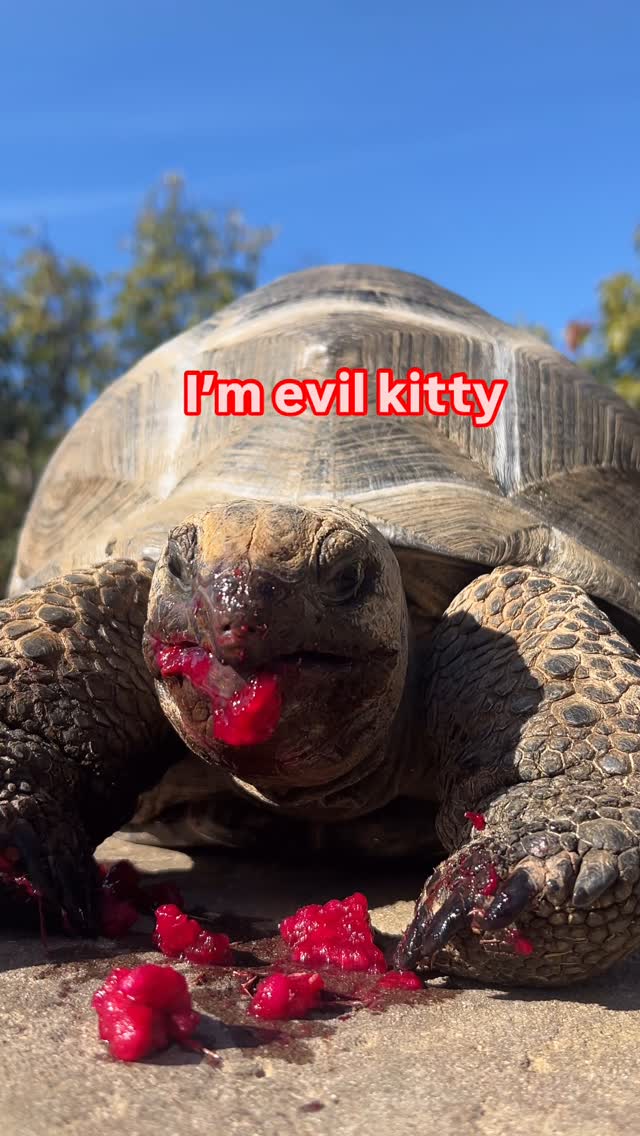- Introduction to Barbie, the young Aldabra tortoise, and her features.
- Aldabra tortoises’ dietary habits and their opportunistic feeding behavior.
- Physical characteristics and life expectancy of Aldabra tortoises.
- Conservation status and efforts to protect these gentle giants.
- Importance of environmental stewardship and education in conservation.
Barbie, the youngest Aldabra tortoise at our center, is a remarkable example of the resilience and adaptability of these fascinating creatures. At just seven years old, Barbie has already captured the hearts of many with her endearing personality and distinctive diet. Despite her youth, she represents a species that has endured through centuries, showcasing the vitality of these ancient reptiles. Aldabra tortoises are known for their impressive size and longevity, characteristics that make them both awe-inspiring and crucial to conservation efforts.
Aldabra tortoises are primarily herbivores, but they have developed an adaptive and opportunistic approach to feeding. In their natural habitat, they predominantly consume grasses, leaves, and other vegetation. However, like Barbie’s enjoyment of prickly pears, they are not averse to indulging in fruits like cactus on occasion. This adaptability is vital for survival in diverse environments, ensuring they can capitalize on available resources. Observing Barbie confidently munching on a prickly pear highlights her natural feeding behavior and adaptability. Such tendencies reflect a broader pattern seen in Aldabra tortoises both in the wild and in conservation centers globally.
The Aldabra tortoise is renowned for its immense size and remarkable longevity. These gentle giants can reach a weight exceeding 500 pounds and live for more than two centuries, with sexual maturity at around 25 years of age. Their enormous size is not just for show; it plays a critical role in their ecosystem. They participate in seed dispersal and influence vegetation dynamics through their grazing habits. Barbie, though still a juvenile, will eventually grow to share these characteristics, further emphasizing her species’ evolutionary success. Her presence at the center provides a crucial opportunity for researchers and visitors alike to witness the development of these incredible animals.
Sadly, Aldabra tortoises are among the few remaining groups of giant tortoises, making them a species of concern. Their existence highlights the impact of human activity on biodiversity. Originally found in greater numbers across the Indian Ocean islands, they are now primarily confined to the Aldabra Atoll. This isolation offers a form of natural protection, but human intervention remains essential. Active conservation programs are critical to preserving their populations, focusing on habitat protection and restoration, anti-poaching measures, and research to monitor their populations. Conservation centers like ours play a vital role in these efforts by providing safe environments for tortoises like Barbie to thrive and educating the public about their ecological importance.
Education is a powerful tool in wildlife conservation, fostering a sense of environmental responsibility and stewardship. By engaging with conservation centers and learning about species like Barbie, individuals can develop a deeper understanding of the challenges facing wildlife today. Education initiatives not only inform but also inspire conservation actions among the public. Experiential learning, where visitors see and interact with animals like Barbie, can significantly enhance the empathy and understanding needed to drive conservation efforts forward.
Through Barbie, the Aldabra tortoise, we gain insight into the broader efforts and complexities of conserving these formidable creatures. Her life and diet tell a story of adaptation and survival, echoing the resilience of a species that has navigated the challenges of evolution. Observing and learning from Barbie offers a window into the necessity of stewardship in preserving the intricate web of life on our planet. Through focused conservation initiatives, education, and engagement, we can protect the Aldabra tortoises and other endangered species for future generations. Barbie reminds us of the delicate balance required to maintain biodiversity and the vital role we play in this ongoing journey.
*****
Source Description
Please say hi to Barbie, our youngest Aldabra tortoise here at the center! Barbie is only 7 years old and most definitely not evil (as far as we know). Although Aldabras primarily feed on greens, these tortoises have a rather opportunistic diet. Here you can see Barbie chomping down on some juicy prickly pear!
These gentle giants can weigh upwards of 500lbs and live over 200 years, reaching maturity at around 25 years old! As only one of the two remaining groups of giant tortoises, Aldabras are considered a threatened species. However this doesn’t keep them from enjoying cactus fruits on a warm winter day at our conservation center!


